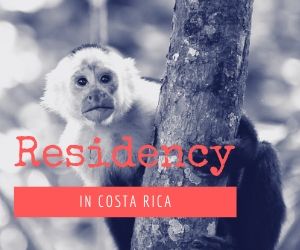TW,
Don't just take ID's word on it. Which countries were or were not included in CAFTA (or any other international agreements) has as much to do with local politics as it does anything else. CR itself almost didn't sign on. If they hadn't, would that have meant they weren't part of CA either? Belize never signed on to CAFTA either but is part of CARICOM, so I guess that makes them a Caribbean Island. OTOH, the Dominican Republic IS part of CAFTA but is NOT a member of CARICOM (nor, for that matter is Cuba) so I guess that means the DR must be part of Central America. Switzerland is not part of the EU, so I guess that means they're not in Europe. And Panama is not a member of USAN, so I guess that means they're not part of S. America either and thus don't really belong to any region.
Actually, almost 2 years ago, Panama signed and ratified a BILATERAL trade agreement with the US (known as TLC in Panama) which is still waiting to be ratified in the US. No, its not part of CAFTA, but its not part of any multilateral trade agreement with the US that is limited to S. American countries EITHER and that doesn't at all mean that the US considers them part of S. America rather than CA. In fact, the
US State Department website includes this:
Quote:
Panama is a member of the Central American Parliament as well as the
Central American Integration System (SICA). Panama joined its six Central American neighbors at the 1994 Summit of the Americas in signing the Alliance for Sustainable Development, known as the Conjunta Centroamerica-USA or CONCAUSA, to promote sustainable economic development in the region.
I'm not sure where ID gets that CR doesn't consider Panama part of Central America, but if that's the case they probably don't consider Belize to be part of CA either just because it doesn't share the historical ties of the 5 countries that were part of the Federal Republic of Central America way back in the early 1800's. For that matter, it wouldn't surprise me if some people in Colombia still consider Panama to be part of Colombia, not just S. America, since it USED to be part of that country as "recently" as 1903 (then called "New Granada"). And Colombia has similar but ongoing territorial disputes with Venezuela and Ecuador. What ever boundaries individual countries may place on their regions means little compared to what is recognized by the international community and I believe the international community considers Panama to be part of Central America NOT S. America.
I prefer to rely on geographers and cartographers in that international community for questions such as this. Consider these sources:
Worldatlas.com CA mapMaps.com CA mapFactmonster.com CA map (uses Map.com map)
Infoplease.com CA map (uses Map.com map)
Mapquest.com S. America mapHolt Reinhart Winston SA map (uses Mapquest map)
http://geography.about.com/library/maps/blrsouthamerica.htm Note which country is NOT on their list
http://www.world-atlas.us/south-america.htm Note which country is NOT on their list
http://www.sitesatlas.com/ Note which countries turn red when you mouse over each region.
And then there is the opening line from the
Wikipedia article on Panama:
Quote:
Panama, officially the Republic of Panama (Spanish: República de Panamá; Spanish pronunciation: [reˈpuβlika ðe panaˈma]), is the southernmost country of both Central America and, in turn, North America.
And the location description from the
CIA World Fact Book:
Quote:
Central America, bordering both the Caribbean Sea and the North Pacific Ocean, between Colombia and Costa Rica
In fact, I'm not sure who the "most people" are that ID is talking about either. I've yet to find even one verifiable source that I can cite that can definitively refute the mountain of support that I've provided above.











